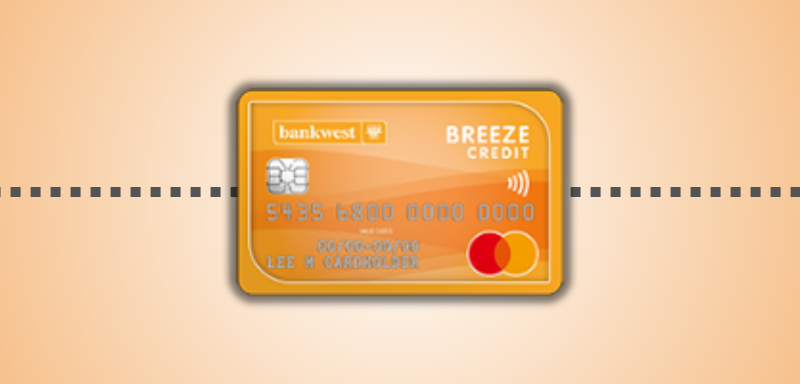Credit Tips
Understanding Credit Card Limits and How They’re Set
Explore what determines your credit card limits, reasons for changes, and concrete steps to use your limit for better financial stability and credit health, with real advice you can use today.
Advertisement

Ever tried to use your card for a big purchase and discovered, mid-swipe, that you’re maxed out? Credit limits are behind moments like these, shaping what you can buy and when you need to stop.
The line dictating how much you can spend on a card isn’t random. Credit limits affect your everyday choices, your overall financial flexibility, and your odds of building good credit habits that last.
This article gives straightforward insights into how credit limits work, what sets them, and what you can do to manage or improve them. Let’s dive into actionable steps and real-world guidance you can use.
Breaking Down Credit Limits and Their Purpose
You’ll gain clarity on why credit limits exist and how they shape your daily card experiences. Knowing this can change not just what you buy but how confident you feel spending.
Banks use credit limits to minimize their risk, while still offering you flexibility. Your credit limit acts as a control valve for your spending but also gives you a key tool for managing your finances.
Setting the Financial Guardrails
Credit limits are much like speed limits for your budget. The card issuer observes your financial road and posts a maximum—go over it, and you risk penalties, just like speeding tickets.
Lenders set these guardrails based on spending habits, payment history, and what’s common for people with similar credit profiles. A limit keeps your debt predictable and more likely manageable.
Think of your credit limit as a protective barrier. When you bump into it, it’s a signal to review your spending—this direct feedback helps train better habits over time.
Enabling Consumer Protection and Bank Prudence
Institutions want to protect not only themselves but also you. A well-set credit limit prevents you from taking on more than you can pay back, which guards against mounting debt.
Your credit limit also functions as a way for banks to rank you by risk. The bank’s internal models look at your income, debt, and even how new to credit you are.
If your limit feels low, it might signal the bank sees uncertainty about your ability to repay larger sums. When your limit is higher, it communicates more trust—but with it comes larger responsibility.
| Credit Limit Size | Common User Profile | Likely Impact on Credit Score | What To Do Next |
|---|---|---|---|
| < $1,000 | New user or subprime credit | Limits flexibility; watch utilization ratio | Pay in full, keep utilization below 30% |
| $1,000–$5,000 | Average consumer, steady income | Improved flexibility; moderate score boost | Automate payments, monitor spending spikes |
| $5,000–$15,000 | Strong credit history | Greater buying power; low utilization helps score | Rotate purchases, avoid large balances |
| $15,000–$25,000 | High-earner, long credit history | Excellent utilization, potential rapid score jumps | Request limit increases with income changes |
| Over $25,000 | Premium credit, stellar track record | Top-tier; biggest positive impact on utilization | Maintain low balances, keep accounts open |
When Credit Limits Go Up or Down: What Triggers Adjustments
Staying alert to what affects your credit limit unlocks more control. Credit limits change for specific reasons, and knowing these lets you take action when you want more buying power.
Your credit limit might rise if your card usage looks responsible, or drop if the issuer senses higher risk. Banks review accounts regularly, sometimes automatically adjusting limits without being prompted by the cardholder.
Key Behaviors That Move Your Limit
Increasing your limit hinges on consistent, reliable borrowing and repayment. For example, paying early each month, never missing deadlines, and rarely carrying a balance signal strong financial discipline, opening you up to raises.
- Pay your balance in full—shows reliability and reduces risk, making limit increases more likely when your issuer reviews your account.
- Use your card regularly—demonstrates active, careful management and helps prove you can handle a higher limit responsibly, building trust with your issuer.
- Avoid maxing out—signals self-control and lowers utilization ratio, which can trigger automatic credit limit increases with some banks or issuers.
- Update income information—gives issuers context for a bigger limit. When you get a raise, report it through your account portal or by calling customer service.
- Request a limit increase—after six months or a year with good behavior, contact your issuer directly. Prepare to explain income stability and low debt loads for best results.
Practicing these behaviors consistently creates a predictable track record, and many issuers reward that reliability with higher credit limits over time.
Actions That Lead to Decreases
On the flip side, certain moves can cause your credit limit to drop, sometimes without advance notice. Recognizing these can help you avoid accidental pitfalls and keep your account healthy.
- Skip payments or pay late—missed or delayed payments make you look risky to an issuer and are a leading cause for slashing credit limits abruptly.
- Rack up large balances—staying close to your credit limit (over 80% utilization) can signal financial stress, prompting an issuer to scale back your available credit.
- Open several new cards—adding lots of new accounts quickly looks like you’re desperate for funds, a red flag that may trigger limit reviews and reductions.
- Name changes to negative status—if your credit score dips due to negative reporting or other loans defaulting, credit limits might follow that downward trend.
- Stop using your card—dormancy suggests the account is unnecessary; the issuer may lower your limit or close the account altogether, denting available credit.
If you catch yourself approaching any of these patterns, take corrective steps soon to stabilize or recover your credit limit before bigger disruptions happen.
Factors Lenders Weigh When Deciding Your Credit Limit
Understanding which variables matter most gives you leverage when seeking higher credit limits. Lenders weigh your risk profile by measuring clear, observable details—not just your credit score.
Your income, debt levels, payment history, and card usage together write your financial story. Issuers check these chapters to decide what size limit aligns with their risk tolerance and your borrowing abilities.
Income and Debt-to-Income Ratio: Foundation Blocks
Lenders look for steady, verifiable income because it suggests you can pay what you borrow. They’ll ask about salary, side hustles, and sometimes request tax returns for large increases.
Your debt-to-income ratio isn’t just mortgage talk—issuers tally your monthly obligations and compare them to your income. Staying under 36% total debt-to-income keeps you in a safer applicant pool.
If a lender sees your debts are rising just as fast as your income, they may cap your credit limits or ask you for more financial documentation before offering an increase.
Spending, Repayment, and Length of History
Regular, responsible spending—like using your card for utilities or groceries—proves you use your account for real needs, not impulsive splurges. This can tip reviews in your favor.
Repayment history weighs heavily. Missing one or two payments suggests potential for default, but a streak of on-time payments helps guarantee higher or maintained credit limits.
The longer your account stands in good status, the better. A card with a decade-long history in your wallet quietly boosts lender confidence, as it shows consistency and reliability.
Adjusting Your Credit Limit: Tactical Steps for Success
Requesting a credit limit increase is a practical move when you’re ready to boost buying power or lower your utilization. Plan every step for the greatest chance of approval and minimal risk to your score.
Before reaching out, review your monthly statements for consistency. Confirm on-time payments, rising income, and modest existing balances. These details build the confidence you need for a strong request.
Timing and Documentation: Make Every Ask Count
Timing matters. The best window is six to twelve months after opening your account or your last increase. This proves you can handle your current credit limits smartly before asking for more.
Gather your proof points. Make a simple list of income sources and last pay stub. If self-employed, pull up your last two years’ worth of tax returns for fast verification during your request.
Be ready with numbers—suggest a specific new limit, maybe 20-30% above your current one. It shows you’ve done your homework and aren’t just guessing in the dark.
Minimizing Score Impact and Preparing for the Outcome
Sometimes, requests can result in a hard inquiry on your credit report. Ask the issuer beforehand if they’ll run a soft or hard pull to avoid score drops you weren’t expecting.
If you’re denied, politely request feedback. Listen closely: if it’s utilization, repayment history, or income, target those areas for improvement before your next attempt in a few months.
After approval, use the extra credit wisely. Don’t ramp up spending for fun; instead, keep balances low and enjoy the positive utilization boost for your credit scores long-term.
Why Managing Credit Limits Pays Off
Growing your knowledge about credit limits lets you steer your financial life—spending, credit scores, and flexibility—all in productive directions. Well-maintained credit limits are a lifelong asset.
The way you treat your limit today—by spending purposefully, watching utilization, and checking in before requesting increases—predicts your access to better terms and more borrowing power tomorrow.
Stay proactive with credit limits so they support your goals for travel, emergencies, and day-to-day convenience. Every sensible step builds a path toward financial health and peace of mind.
Trending Topics
You may also like

Bankwest Breeze Mastercard review: Your Go-To Low Rate card
Find out why the Bankwest Breeze Mastercard is a smart choice for those wanting low ongoing rates and excellent starter offers.
Keep Reading